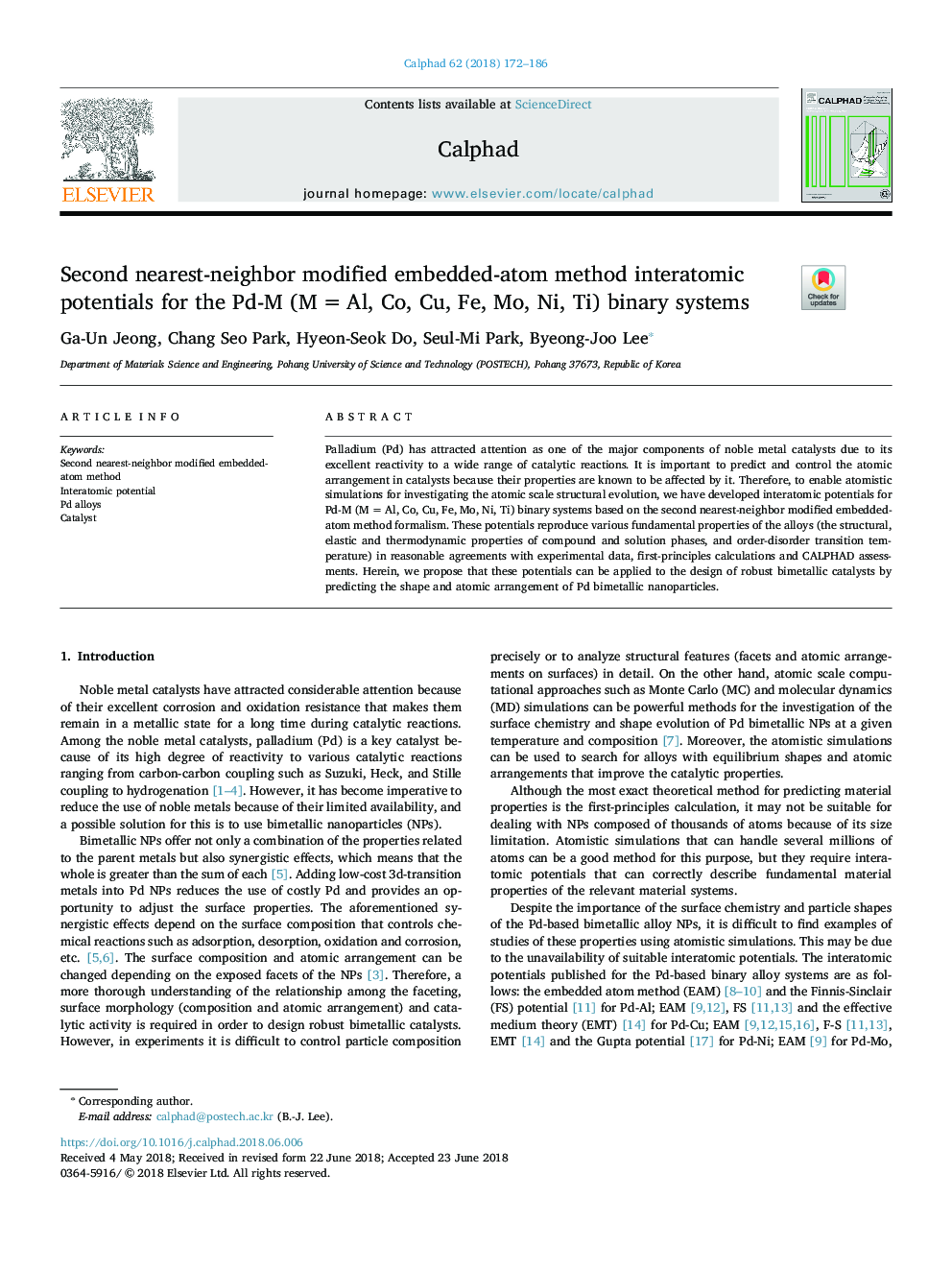| Article ID | Journal | Published Year | Pages | File Type |
|---|---|---|---|---|
| 7955119 | Calphad | 2018 | 15 Pages |
Abstract
Palladium (Pd) has attracted attention as one of the major components of noble metal catalysts due to its excellent reactivity to a wide range of catalytic reactions. It is important to predict and control the atomic arrangement in catalysts because their properties are known to be affected by it. Therefore, to enable atomistic simulations for investigating the atomic scale structural evolution, we have developed interatomic potentials for Pd-M (Mâ¯=â¯Al, Co, Cu, Fe, Mo, Ni, Ti) binary systems based on the second nearest-neighbor modified embedded-atom method formalism. These potentials reproduce various fundamental properties of the alloys (the structural, elastic and thermodynamic properties of compound and solution phases, and order-disorder transition temperature) in reasonable agreements with experimental data, first-principles calculations and CALPHAD assessments. Herein, we propose that these potentials can be applied to the design of robust bimetallic catalysts by predicting the shape and atomic arrangement of Pd bimetallic nanoparticles.
Related Topics
Physical Sciences and Engineering
Materials Science
Materials Science (General)
Authors
Ga-Un Jeong, Chang Seo Park, Hyeon-Seok Do, Seul-Mi Park, Byeong-Joo Lee,
